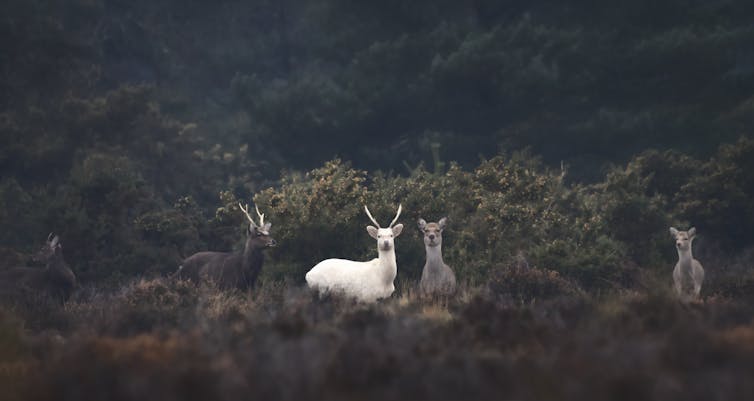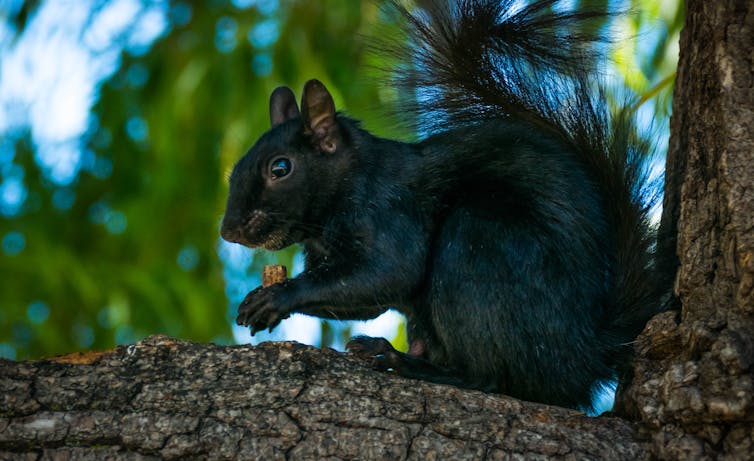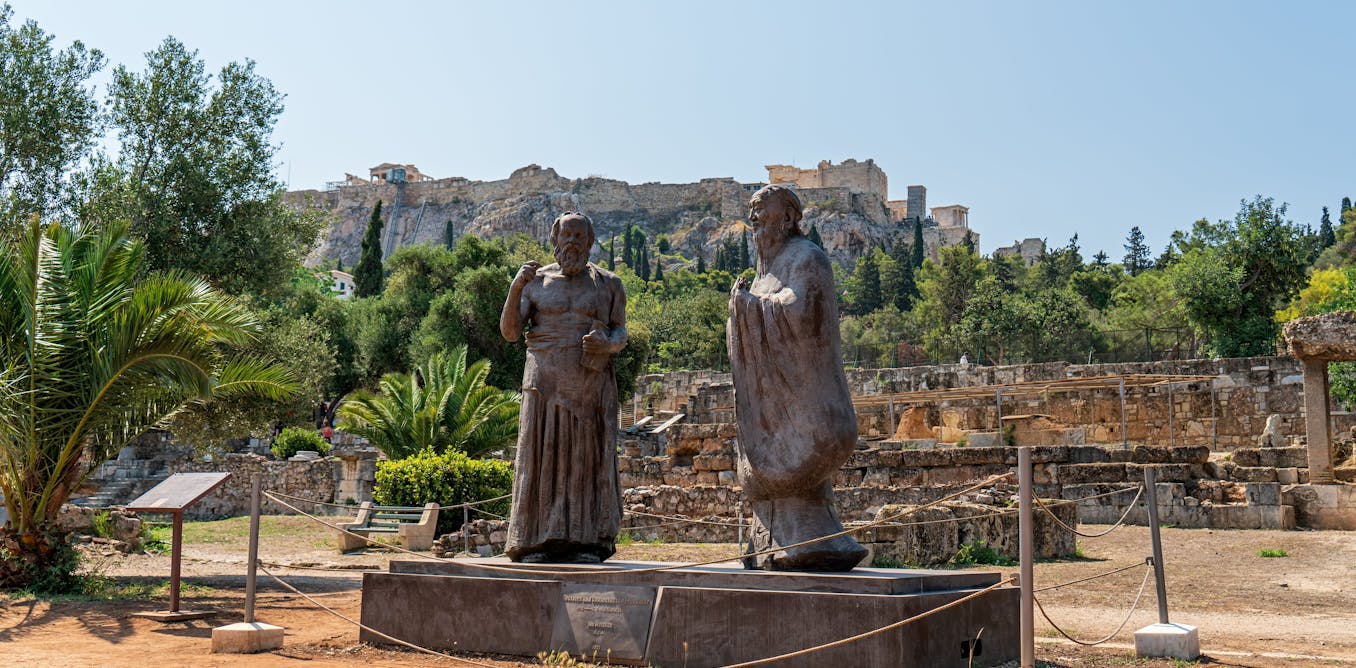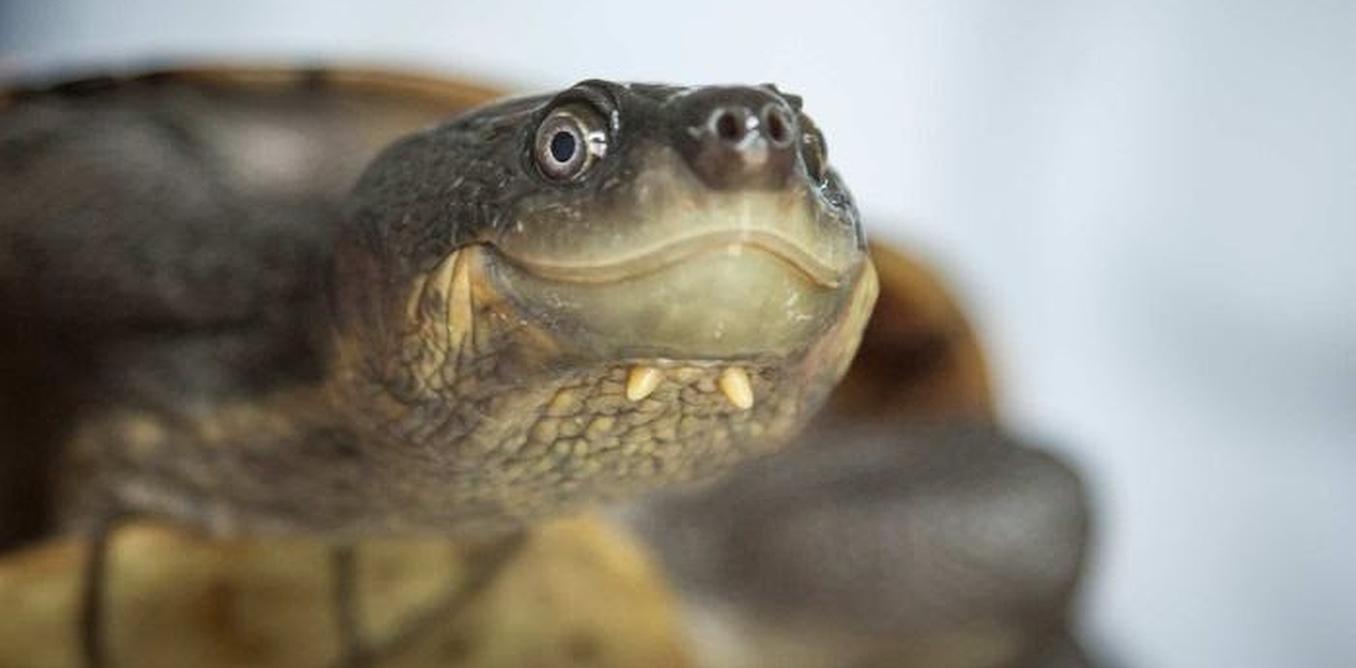Imagine it’s a crisp and sunny fall morning. You just left your local coffee shop, ready to start your day.
Out of the corner of your eye, you catch a glimpse of something moving in the bushes. Is it a squirrel stashing acorns for the winter? A robin fattening up for migration? As you get closer, the image becomes clear and you unconsciously hold your breath.
It’s a black cat out for its morning stroll.
You pause for a second to decide your next move. Cross the street so the cat can’t cross your path? Muster the courage to walk past it, or even crouch down to pet it? Rationally, you know the idea that a black cat is bad luck is just a silly superstition … but you have an important meeting this afternoon and don’t want to jinx it.
This superstition about black cats and other black animals in general has shaped people’s preferences about animals. It’s left its mark on things such as lower adoption rates for black cats and beliefs that black cats are more aggressive. Yet, these biases are unfounded.
As two biologists who focus on human-wildlife interactions, what we find scary is how superstitions, lore and myths can shape your subconscious – particularly biases toward the animals people are trying to conserve and protect.
KenCanning/E+ via Getty Images
Rarity of a solely black or white animal
Of course, animal fur, feathers and scales come in various colors across the visible and invisible-to-humans spectrum. These colorations play a significant role in the survival of wildlife by functioning as a form of concealment, temperature regulation or communication. In white-tailed deer, for instance, a flash of a white tail can indicate danger is near, while the sharp red breast of a male cardinal attracts females that are ready to mate.
Within species, color variations are found throughout the animal kingdom, including melanistic animals with more dark pigmentation and leucistic animals with a reduction of pigment. There are black panthers, a melanistic version of a leopard, Panthera pardus, or jaguar, Panthera onca. On the other side of the spectrum are white spirit bears, a leucistic version of an American black bear, Ursus americanus. There are also albino animals that lack most or all pigment.
Scientists recognize these color variations as extreme abnormalities within the natural world. Being all black or all white is a rare phenomenon, unlikely to persist in the wild because it’s a selective disadvantage. These animals often have a tougher time blending into their habitat – a challenge for predators trying to ambush their prey, and for prey trying to conceal themselves from predators. They may also struggle to regulate their temperature and to communicate with others in their species.
A suite of genes that can change in many ways is behind this rainbow of wildlife coloration. One of the most well-known and studied genes is MC1R. In animals, loss-of-function mutations in the MC1R gene can result in light, yellow or reddish coat color. In humans, redheads have up to five loss-of-function mutations in MC1R, leading to hair that ranges from strawberry blonde to copper.

Kristian Bell/Moment via Getty Images
Protection based on unique color
Recently, we explored how charismatic coloring, including melanistic and leucistic or albinism coloration, affects the conservation of animals in the United States. As we read through local laws and found news stories of wildlife being protected or culled, we noticed a trend: Many albinistic and leucistic animals are protected.
Minnesota, Illinois and Wisconsin laws protect albino/white deer from being hunted. In Marionville, Missouri, white squirrels are protected and given the right-of-way on all public streets, with a penalty of up to US$500 or 90 days in jail for failing to abide by the law. In Louisiana, it’s prohibited to take white alligators from the wild, with a fine of at least $10,000 and six months in jail. The World Wilderness Congress recently adopted a resolution: Making Space to Protect White Animals, Messengers of Peace.
We also found white animals readily celebrated. Brevard, North Carolina, hosts a yearly festival called “White Squirrel Weekend.” People often release white doves at weddings and funerals as symbols of purity and peace. The California Academy of Sciences’ famous albino alligator named Claude has a whole book written about him. And members of the Olney, Illinois, police department wear a patch on their uniform with a white squirrel.
We found similar laws and celebrations do not exist in these jurisdictions for the white animals’ melanistic/black counterparts. We did identify a few cities and schools, including Marysville, Kansas, and Goshen College, that made the black squirrel their mascot.
This discrepancy surprised us because the genetic mutation that causes melanism occurs less frequently than the one that causes albinism/leucism. Pure black animals are more novel. We thought the more rare melanistic animals would pique human interest for being more unusual and trigger more protections.

Elango V/500px via Getty Images
Colors have long-standing associations
For many thousands of years, people have shared with each other stories, lore, tales and myths that attempt to explain the world.
Sometimes these stories provide cautionary advice about the dangers that lurk around us. As our early ancestors sat around fires, telling thrilling stories, they sought refuge together from the darkness that concealed looming threats. The partiality evident in our history can linger for significant periods of time, making it difficult to unlearn.
Many human biases developed as a survival response – one reason a darkly colored nocturnal predator would be fearsome is that it’s so hard to see at night, for instance. Modern preconceptions, though, can be based on harmful ideologies. Somewhere, way back when, white became synonymous with “good” and “pure,” while black aligned more with “evil” and “unclean.” And even now these unconscious affiliations influence how people celebrate and protect – or not – rare animals.
Perhaps more chilling than a black cat darting past you is the thought of how much in your subconscious mind goes unquestioned. Ideologies – whether detrimental or benign – permeate human society, influencing people’s perceptions of reality and informing how they interact with the world.
This Halloween, rather than the spooky proposition of goblins and ghouls, consider whether the more horrifying specters are the unacknowledged and dangerous biases we humans possess.

The post “Animals that are all black or all white have reputations based on superstition − biases that have real effects” by Elizabeth Carlen, Living Earth Collaborative Postdoctoral Fellow, Arts & Sciences at Washington University in St. Louis was published on 10/25/2024 by theconversation.com




































Leave a Reply